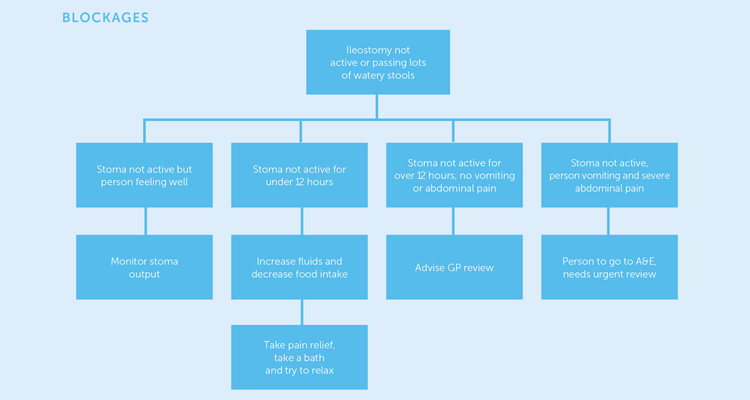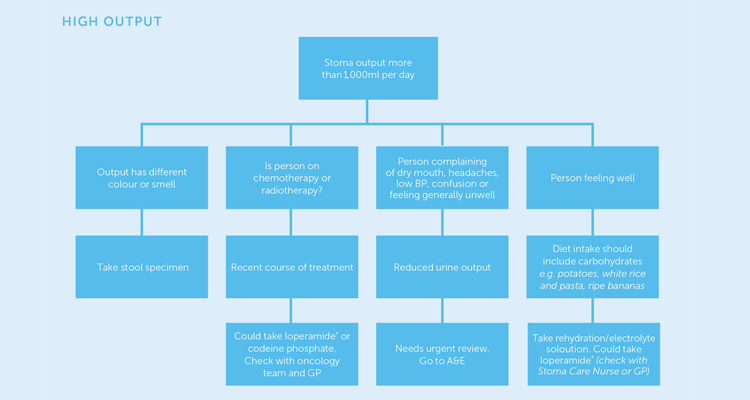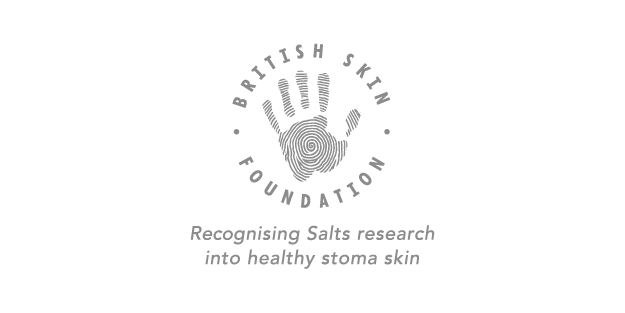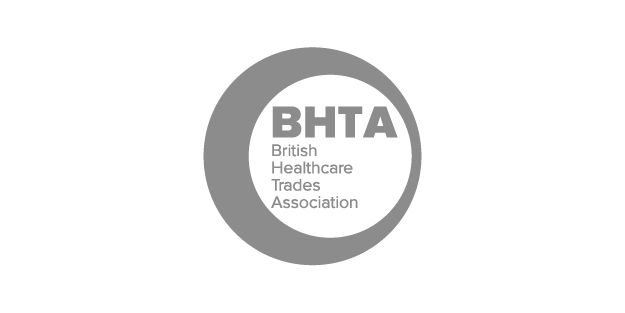Information specific to colostomists
Pancaking
This occurs when faeces remain stuck around the stoma, instead of dropping down into the pouch.
Solution:
- Cover the filter, as this prevents a vacuum from forming and allows faeces to drop into the pouch.
- Place a piece of screwed-up tissue into the pouch to allow air to remain in the pouch.
- Apply a small amount of oil to the inside surface of the pouch, to help faeces slide down.
- Increase fluid intake.
Diarrhoea
Establish the cause of the diarrhoea and treat accordingly (that needs to be prescribed).
Constipation
This ONLY applies to people with a colostomy.
Solution:
- Provide dietary advice regarding fibre intake.
- Increase fluid intake.
- Constipation can be treated with oral aperients, or suppositories given via the stoma.
Information specific to urostomists
Urinary Tract Infections
Some people are more prone to urinary tract infection (UTI). Typical symptoms of a UTI include pyrexia, loin pain, fatigue and flu-like symptoms, cloudy, offensive urine, or even haematuria. A UTI will make the urine more ‘aggressive’ and so tend to erode the adhesive on the appliance.
Solution:
- Take a urine sample: to take a sample of urine from a urostomy, ensure the stoma is cleaned; then either catch the urine in a urine specimen pot without touching the pot with the stoma to prevent contamination or apply a clean bag and obtain the first specimen. NEVER take a specimen from a used bag – it must be newly applied.
- Increase oral fluids (2–3 litres daily).
- Change the appliance daily to help prevent excessive build up of bacteria and possible migration towards the stoma
- As a general rule antibiotics are prescribed when the individual is symptomatic, but medical / nurse specialist consultation should always be encouraged, in order that a full assessment can be made.
- The pH of the urine may need some consideration and monitoring as different bacteria thrive in different environments. For example, bacteria that thrive in an acidic environment will thrive if the urinary pH is low. Urinary pH can often be a complex subject and so support from the urologist and Stoma Care Nurse specialist should be encouraged.
Skin Conditions
In people who have a UTI, the process of bacterial presence in urine changes the pH from 6–7.5 (slightly acid based), to an alkaline medium, pH 7–8. Alkaline urine can produce oxalate crystals which are often responsible for stomal bleeding as it causes the crystals to encrust around the stoma.
Solution:
- This is treated by cleaning the peristomal skin with a solution of one part household vinegar to three parts water.
Maceration of the skin
Maceration is due to inadequate protection from the wafer or appliance adhesive, allowing urine to contaminate the skin.
Solution:
- The template should be checked periodically.
- A suitable barrier film should be used – or a seal, both of which will give extra protection.
Sexual Dysfunction
Due to nerve damage, which is unavoidable during a cystectomy, males will undoubtedly experience erectile dysfunction.
Solution:
- Advice should be sought from a specialist sexual dysfunction clinic.
Mucus Secretion
The section of bowel used to create the conduit will continue to produce its normal secretions, which would normally lubricate the bowel. The mucus may be visible as ‘plugs’ around the stoma or ‘shreds’ in the stoma bag. The production of mucus shreds is usually greatest during the first 2–3 weeks after the stoma operation. (Kirkwood, 2002).
Solution:
- Drink cranberry juice (Note: this is contraindicated for people on Warfarin)
Information specific to ileostomists
Blockages

High Output









